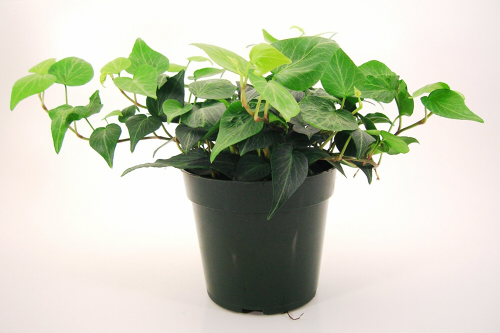Sorry, But Indoor Potted Plants Don’t Actually Improve Air Quality
研究发现:室内盆栽并不能真正改善空气质量
In 1989, NASA conducted its famous Clean Air Study to see whether common houseplants might purify indoor air by removing toxins in addition to absorbing carbon dioxide and releasing oxygen. It worked, and while plants are still capable of absorbing harmful toxins in the air, new research suggests that potted plants’ ability to improve air quality in the home or office is largely overstated and buries a more effective solution to keeping the air clean.
1989年,美国国家航空航天局进行了著名的清洁空气研究,以观察普通室内植物除了吸收二氧化碳和释放氧气之外,是否还能通过排除毒素来净化室内空气。当时的研究证明这种方法起到了作用。但尽管植物能够吸收空气中的有害物质,新研究却表明,盆栽植物改善家庭或办公室空气质量的能力在很大程度上被夸大了,使我们忽视了一个保持空气清洁的更有效的办法。
Writing in the Journal of Exposure Science and Environmental Epidemiology, researchers found that natural ventilation of indoor environments dilutes concentrations of potentially harmful air pollutants much faster than a plant is capable of extracting them.
研究人员在《暴露科学与环境流行病学》杂志上发表文章称,室内自然通风稀释有害空气污染物浓度的速度远远快于植物吸收这些污染物的速度。
“The best way to have a healthy home is to try to reduce indoor emissions, ventilate well (especially when doing high impact emissions like cooking), and using filtration for certain pollutants (e.g. particulate matter),” study author Michael Waring of Drexel University told IFLScience.
该研究的作者、德雷塞尔大学的迈克尔·沃林告诉IFLScience网站说:“拥有一个健康家庭的最佳方式是减少室内排放物、保持通风良好(尤其是在从事烹饪等排放量大的活动时),并且对某些污染物(比如颗粒物)使用过滤器。”
Where NASA and similar studies went wrong is that they conducted their experiments in sealed chambers in laboratories, which do not accurately mimic the many factors that influence our indoor environments.
美国国家航空航天局和类似的研究出错的地方是,他们都是在实验室的密封环境中进行实验,这并没有准确地模拟影响普通家庭室内环境的许多因素。

To come to their conclusions, Waring and his team systematically reviewed a dozen studies by taking the available VOC removal data from different studies and converting the findings into a common metric they nicknamed the clean air delivery rate (CADR). CADR was used to parameterize air cleaning indoors. Using that metric, the impact of plants’ ability to remove VOCs was compared to the removal ability of other kinds of ventilation, both natural and mechanical.
为了得出他们的结论,沃林和他的团队系统地回顾了十几项研究,他们从不同研究中提取了去除挥发性有机化合物的数据,并将这些数据转换成一个他们称之为清洁空气排放率的通用指标。利用清洁空气排放率对室内空气净化进行参数化,将植物去除挥发性有机化合物的能力与自然通风或机械通风的去除能力进行了比较。
“In a small office, you would have to have somewhere between 100 to 1,000 plants to have the same air cleaning impact of ventilation at 1 air change per hour,” said Waring.
沃林表示:“在一个小型办公室里,你必须要有100甚至1000盆植物才能达到每小时换气1次所达到的空气净化效果。”
To understand the effects of indoor pollution, Waring says to think of it in three categories. The first is volatile organic compounds, which are gas-phase molecules that are emitted from many sources such as consumer products, cleaners, and building materials. These tend to reside in the air itself.
为了理解室内污染的影响,沃林说可以将污染物分为三类。第一种是挥发性有机化合物,它是气相分子,从消费品、清洁剂和建筑材料等多种来源排放出来,往往存在于空气本身。
The second is semi-volatile organic compounds (SVOCs), which are in things like pesticides, flame retardants, or plasticizers. These tend to be “sticky” and stick to surfaces indoors and may persist for months or years.
第二种是半挥发性有机化合物,它们存在于杀虫剂、阻燃剂或增塑剂等物质中。这些粘性物质会粘在室内的表面上,并且可能会留存数月或数年。
Lastly, particulate matter, which can be solid or liquid, may be found floating in the air. These indoor pollutants have been linked to asthma, allergic reactions, irritation, and other respiratory ailments.
最后,则是漂浮在空气中的固体或液体的颗粒物质。这些室内污染物与哮喘、过敏反应、刺激和其它呼吸系统疾病有关。
That doesn’t mean you should chuck out your plants just yet. Waring says that although houseplants do not clean the air under typical settings, houseplants have many benefits, most of which are psychological.
不过,这一研究结果并不意味着你现在就应该扔掉你的植物。沃林表示,虽然室内植物不能在典型环境中高效地净化空气,但室内植物有许多好处,其中大部分是心理上的好处。
英文、中文版本下载:http://www.yingyushijie.com/shop/source/detail/id/2137.html








